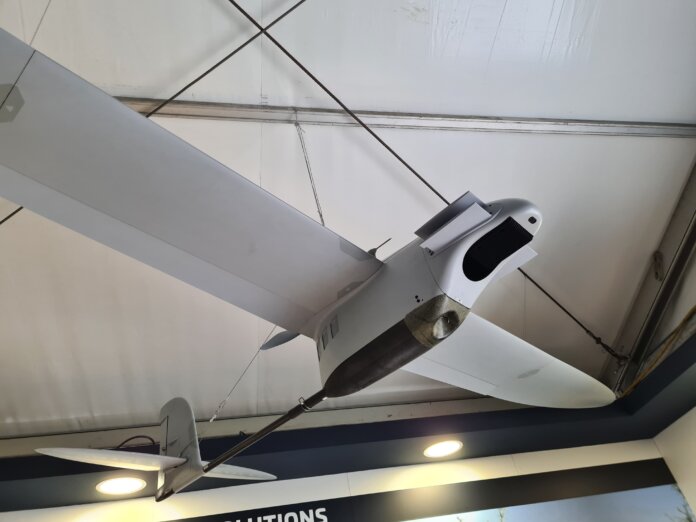
The Armée de Terre could procure a COMINT capability mounted on a tactical UAV in the future which could help counter-insurgency, and search and rescue missions.
Officials from Thales have told Armada that the Armée de Terre (French Army) is interested in procuring a tactical Communications Intelligence (COMINT) capability to equip the company’s SpyRanger series Uninhabited Aerial Vehicle (UAV). The officials were speaking during this year’s Paris Air Show held in the city between 19th and 25th June. The COMINT system takes the form of a swapable payload which can be installed in the nose of the UAV. Users could remove the aircraft’s optronics payload and substitute this with the COMINT system. One concept of operations for the SpyRanger and COMINT payload ensemble is to use this capability to gather tactical communications intelligence over an area of circa 25 square kilometres (9.65 square miles).
Talkin’ ‘bout my generation
Thales officials added that the COMINT system would be used specifically to target cellphone traffic, notably traffic using existing second, third and fourth generation cellular protocols. The ability to gather COMINT on fifth generation, or 5G, protocols is expected to be added to the payload by the end of the year. In terms of frequencies, the Thales officials said that cellphone traffic on frequencies of 600 megahertz to three gigahertz can be detected and localised by the system. They declined to say whether the COMINT payload has the means to demodulate cellphone traffic to exploit for intelligence. Nonetheless, the ability to match cellphone traffic with persons of interest via the UAV’s COMINT payload has clear tactical benefits.
This COMINT payload initiative started life as an internal development by Thales but has since garnered interest from the French Army, particularly from its special forces community. No analysis of communications traffic will be performed by the payload internally. Instead, raw COMINT data will be streamed from the aircraft to operators on the ground via a secure radio link. Thales officials said that this data takes up mere kilobits-per-seconds’ worth of bandwidth and hence does not impose an unnecessary burden on the aircraft’s radio links. The capability would be ideal for supporting counter-insurgency operations where high value individuals could be detected and tracked via their cellphone emissions. Likewise, the capability would be useful for search and rescue operations where people in distress could be found and rescued via their cellphone signals. The payload itself weighs two kilograms (four pounds) and could have a line-of-sight range of up to 70 nautical miles/nm (130 kilometres) from 3,000 feet/ft (1,000 metres/m) altitude, and 86.4nm (160km) from 1,500m (4,921ft).
Development of the payload is complete, the officials emphasised, and deliveries could begin as early as 2024. There is the possibility that the force could initially order a single SpyRanger, together with the COMINT payload, for trials. A larger procurement could then follow shortly after.
by Dr. Thomas Withington













